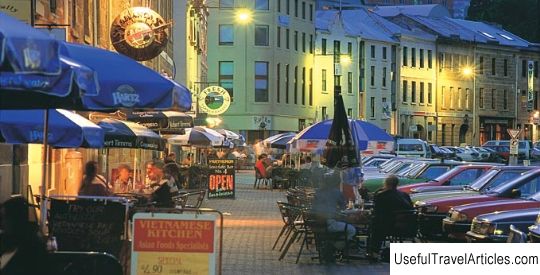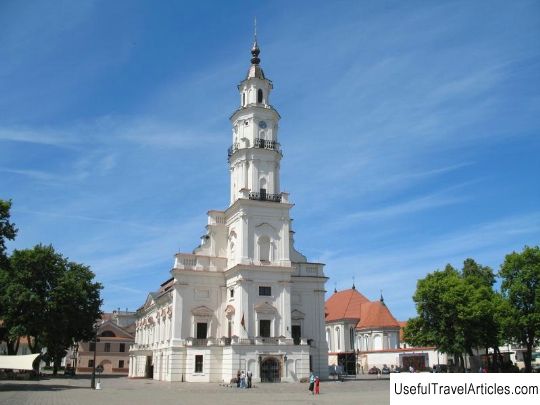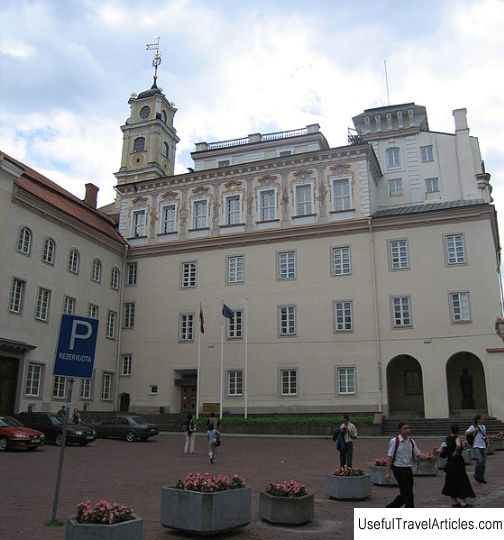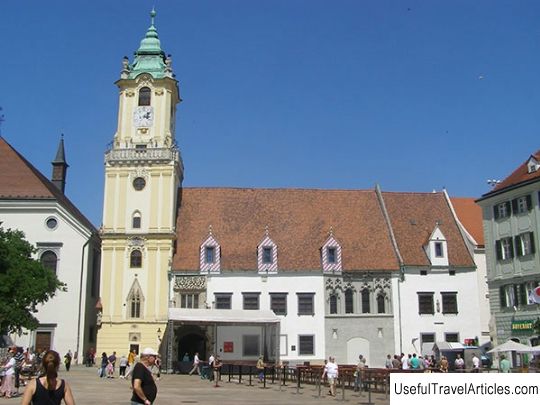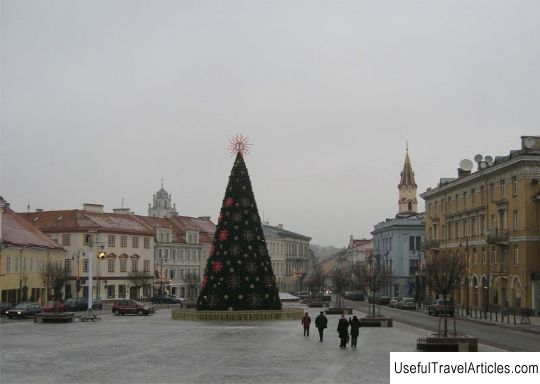Town Hall (Vilniaus rotuse) description and photos - Lithuania: Vilnius
Rating: 8,2/10 (1398 votes) 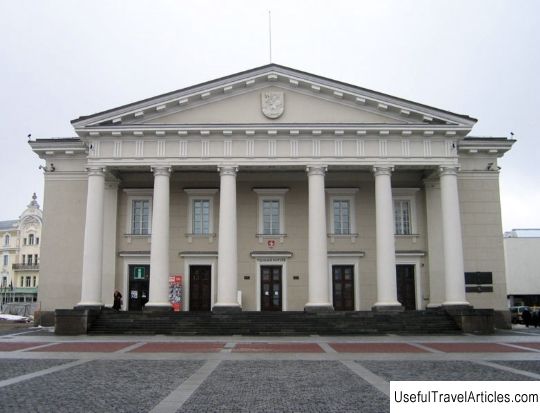
Town Hall (Vilniaus rotuse) description and photo - Lithuania: Vilnius. Detailed information about the attraction. Description, photographs and a map showing the nearest significant objects. The name in English is Vilniaus rotuse. Photo and descriptionThe Town Hall in Vilnius is an architectural monument, which is an outstanding representative of an architectural building in the style of classicism, which was of all-Union significance in Soviet times. It is located on the Town Hall Square in the city of Vilnius, while serving as a representative room for city ceremonies and events, celebrations of various public holidays, delegations, receptions and ceremonial meetings. Since the early 19th century, this building, which is one of the most beautiful buildings in the city, has hosted concerts, performances or balls in honor of Alexander I. The Town Hall was built by the city magistrate in the center of the Old Town on the market square right on the intersection of trade routes - as mentioned in archival sources of the 16th century. There is an assumption that it was founded in the last quarter of the 14th century by order of Yagaila. The city plan in 1576 assumed the form of a town hall that was large enough for that time with a dome, as well as a high peaked tower. Most likely, the first town hall bore Gothic forms, because in the basement of a modern building, premises from the time of Jagaila were found. We can say that until the middle of the 19th century, the town hall was the center of social, economic, political and, in many ways, cultural life Vilna, while playing a significant role in the life and events of the city. The Town Hall housed the city government (magistrate), whose meetings were held in the same building. Particularly important decisions were made here for the urban life of the population. The council was attended by: 24 burgomasters, a council of the magistrate, consisting of 24 councilors, voyta, which was appointed exclusively by the prince. Officials sat in the town hall who dealt with cases, litigations, complaints, and also kept receipts and expenditures, collected fines and taxes. The magistrate kept a guard, a herald for publicizing decisions, an executioner for executions, a watchmaker to control the tower clock, a bell ringer who, by ringing bells, warned the residents of the city about the onset of fires and various other dangers, as well as the arrival of especially noble and honorable guests. In addition, a prison, archives, city treasury, scales and weapons were located in the building of the town hall. The town hall suffered various damage during fires or wars; for this reason, the building has been rebuilt and renovated more than once, changing its appearance. Over time, more and more new buildings were added to the building. The town hall was especially badly damaged during the devastating fires of 1748-1749. After these tragic events, the town hall was restored for several years, which took a lot of money. In the middle of the 18th century, the town hall was reconstructed by Tomasz Roussely and Johann Christoph. In 1781, part of the town hall building was damaged by fragments of the collapsed octagonal clock tower. In 1810, a Polish theater began operating in the town hall. Since 1845, the building has housed a city theater, where drama performances in Polish and Russian took place. In 1924-1925 the theater was closed by the city authorities due to the threat of a possible fire. At this time, the street iron staircase was removed. In the interwar years, the town hall was restored according to the sketches of Stefan Narembski, while the building acquired its original appearance. A new marble staircase was also erected. Representative ceremonies of the magistrate were held in the restored premises, and two halls were intended for the exposition of the city museum. In 1940, the Vilnius City Museum received life in this building, which was reorganized by 1941. After World War II, the Art Museum appeared in the town hall, which especially contributed to acquainting visitors with the fine art of Lithuania. In 1995, the exhibitions of the Art Museum were moved to other premises of the National Museum of Art of Lithuania, and in its place the Palace of Artists appeared. The low-rise building of the town hall has symmetrical classical proportions, the main facade is decorated with a portico with Doric columns, as well as a low triangular pediment.       We also recommend reading Monastery of St. Birgitta (Pirita klooster) description and photos - Estonia: Tallinn Topic: Town Hall (Vilniaus rotuse) description and photos - Lithuania: Vilnius. |
